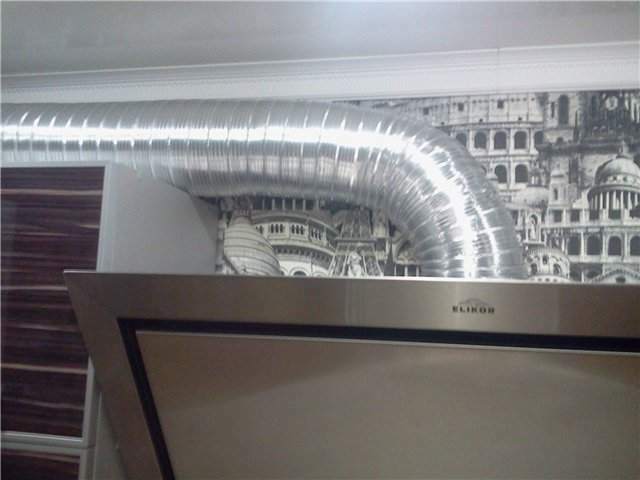 It takes ~ 2 minutes to read
It takes ~ 2 minutes to read

Initial repair planning

A total replacement of electricians, planning a new electrical network and the installation of a large number of outlets occurs either when buying a new apartment, or during the overhaul of existing housing. You need to determine their number and location even before the start of all work - one of the first ones is laid in the repair of an electrician. After finishing, it will be too late to think: gating and other installation work will require finishing the walls again.
The issue of the placement of sockets will become acute even when creating a design project for an apartment, since location will depend on the placement of the refrigerator and other household appliances, and therefore the design of the room generally.
What should a plan include?

- The location of all the large appliances that occupy a place comparable to furniture: refrigerator, dishwasher;
- The location of the stove and the hood under it (even if the outlet for the stove is already there, your hood will need its own electricity);
- Planned placement of smaller appliances, such as a slow cooker, pressure cooker, toaster, bread maker, microwave;
- A place for the TV if it will be present;
- Location of sockets used in cooking: for a blender and other manual equipment.
In addition, from one to several additional outlets should be present in this room. They are not related to the cooking process and the kitchen as such, but are necessary for convenient and comfortable use of the room.
Why additional places may be required:
- Vacuum the room, do wet cleaning (systems such as Karcher).
- Connect a laptop or other equipment.
- Charge your phone, tablet

Given that such power sources are usually used for small household needs and a telephone, it is best to place them in the area of the recreation area. In this case, not only the height of the outlets in the kitchen should be taken into account, but also their location must be carefully considered.
It will be unpleasant if the phone’s charging wires are constantly missed because the outlet is too far and low from the sofa or chair. A mistake in planning is especially painful for kitchens with a small area, where often there are simply no options for redevelopment after the renovation.
Optimum quantity calculation

Fortunately, there is a calculation formula that eliminates the need to guess by yourself. These calculations are rather arbitrary, but there should be no shortage of outlets at least in the first years after the repair. It is believed that their number should be a quarter higher than the number of constantly used electrical appliances.
Electrical appliances such as a refrigerator, microwave, extractor fan, TV or even a kettle are constantly included in the electrical network. Sockets for all this equipment will always be busy, and you won’t be able to use them. So, after deducting all these consumers, a minimum of 25% should be put in stock. In the presence of non-standard or personal needs (server, aquarium with lights and pumps, etc.), sockets for these needs are planned and laid separately.
Which sockets are best for the kitchen?
In the case of the kitchen, the layout includes not only indicators such as height and their location, but also characteristics. The following conditions are typical for the kitchen:
- High humidity during cooking;
- Temperature changes;
- Frequent use if small appliances are actively used in cooking.
Outlets must be adequately protected against moisture so that they can be used safely in any kitchen environment.
Such models should:
- Relate to IP 44 (or better in terms of protection);
- Have a gasket and protective cover.
It is especially important to install such outlets in those places where there is a maximum risk of water ingress: spray from under the sink or during cooking, near the work area. In those places where the chance of water getting into it is zero - for example, near the dining table, you can install the most ordinary ones without additional protection.
If you have free funds, you can install more comfortable options:
- Built-in;
- Retractable;
- With child protection (many models have this option in the form of a protective curtain);
- With optional USB for mobile devices.
Wiring Rules

Naturally, the connection of all lines goes through the machine. When connecting, it is required to immediately ground all electrical appliances with metal cases - this is a general safety rule that applies throughout the apartment, and not just in the kitchen.
All electricity in the apartment should be grouped by scope and divided by machines in a protective shield. Groups of sockets that feed individual rooms can be brought out in one machine. This improves overall system security.
For example, three machines can be responsible for electricity in the kitchen:
- For a plate;
- For the refrigerator;
- For other devices.
Installation height and switches
The choice of the exact location for installation depends on the specific kitchen project, and in each apartment these places are different. Their installation near the work area is high: so that not only furniture, but also equipment wires do not interfere with the cooking process, so at what height installation is strictly the matter of each project. But near the dining table, electricity can be brought just above the surface of the countertop, and 10 centimeters from the floor - depending on how convenient it is for the residents and what equipment will be to connect.
In the kitchen, it makes sense to install built-in sockets in those places where they will be used only periodically. The color of the plastic and the decoration can be matched to the finish, since the standard white color stands out brightly in almost any interior.

Before the start of the wiring of electrical wiring, you must also determine all the switches, as well as other electrical systems and devices, if any.
Switches also do not need to choose a classic white color: on the market there is not only a wide range of materials and colors, but also many models with additional functionality. You can install beautiful touch: photos show that such models are very convenient and different almost eternal life, since they lack moving elements and mechanical impact.
Installation is prohibited in the following places:
- For built-in furniture or appliances;
- At any height above the sink;
- In bedside tables, cabinets and other similar furniture.
Currently, generally accepted standards for working with electricity prohibit the installation of sockets in residential apartments before embedding appliances. In the case of using such a technique, the connection should be made from below, the switches will also be located there.
Layout and location of outlets in the kitchen (photo)






With great interest I always read your comments to my articles. If you have any questions, feel free to ask them, leave, you are welcome, Your feedback in the form below. Your opinion is very important to me. Thanks to your criticism and thanks, I can make this blog more useful and interesting.
I would be very grateful if you rate this post and share it with your friends. This is easy to do by clicking on the social media buttons above. Do not forget the article you like Add to bookmarks and subscribe to new blog posts on social networks.


